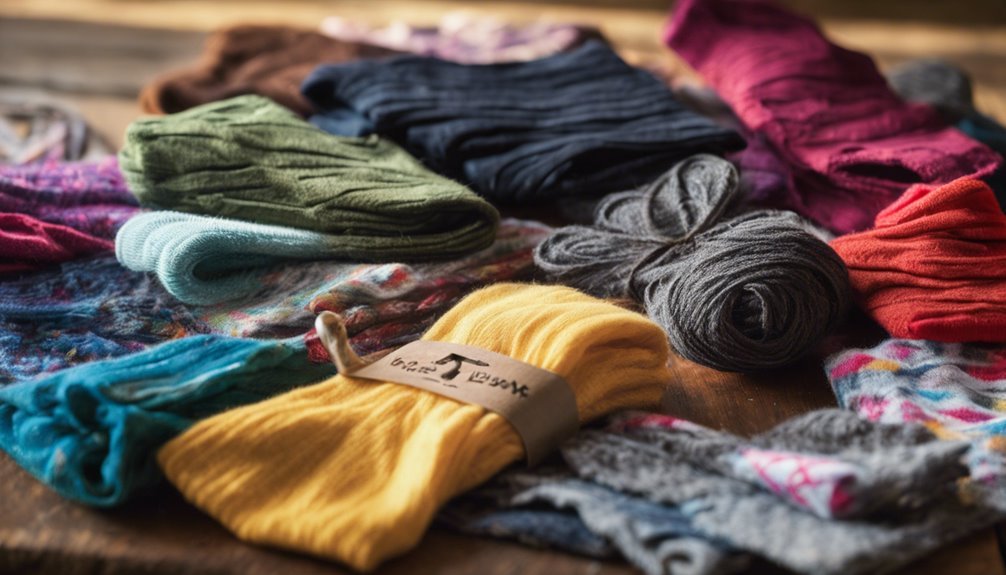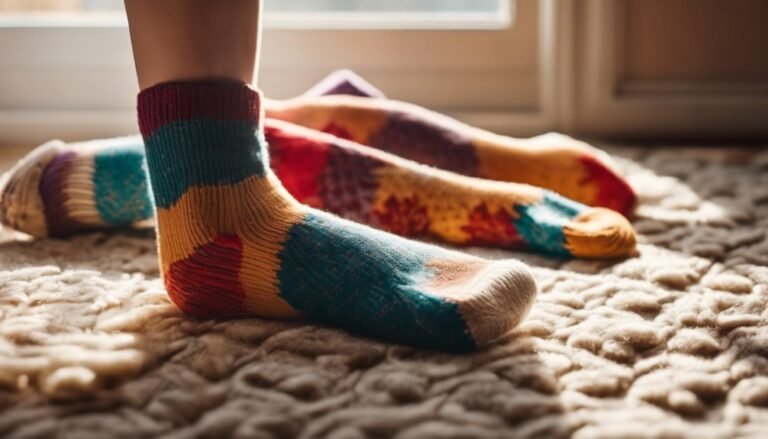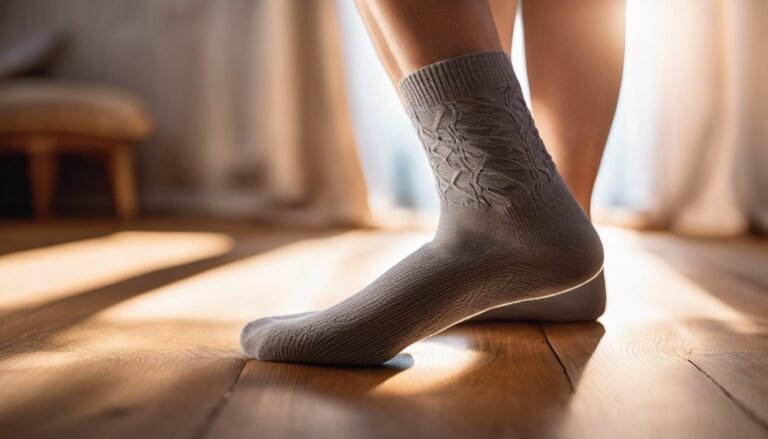Upcycling Old Socks Into Eco-Friendly Cleaning Rags
Have you ever noticed how quickly socks go missing, leaving you with a pile of mismatched ones? Instead of letting those orphaned socks clutter your drawers, consider turning them into eco-friendly cleaning rags.
This practical solution not only helps reduce waste but also saves money. By repurposing cotton or wool socks, you can create effective rags for dusting, scrubbing, and polishing.
Simply cut, wash, and store them for easy access. This approach not only lowers your carbon footprint but also encourages a sustainable lifestyle.
By exploring this resourceful solution, you'll discover more creative ways to contribute to a greener planet.
Benefits of Upcycling Socks for the Environment
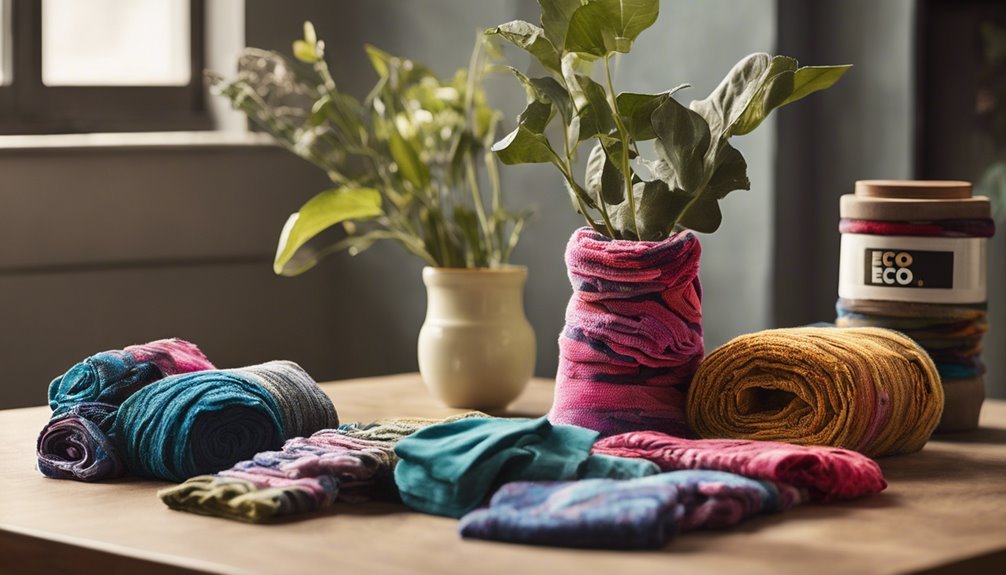
While it might seem insignificant, upcycling old socks can have a surprisingly positive impact on the environment. Instead of tossing them in the trash, consider transforming them into eco-friendly cleaning rags. This small act contributes to sustainable practices by reducing waste and conserving resources. By repurposing socks, you're minimizing the environmental impact associated with textile production and disposal. Every sock saved from a landfill represents a step towards a more sustainable lifestyle. Plus, you'll enjoy the freedom of using what you already own, cutting down on unnecessary purchases. Embrace this practical solution as a way to exercise creativity while contributing to a healthier planet. Remember, even the smallest actions can lead to significant environmental gains when practiced collectively.
Cost Savings of Reusing Old Socks
Reusing old socks can lead to surprisingly substantial cost savings in your household budget. By transforming socks into cleaning rags, you're tapping into a sustainable savings strategy that reduces waste and reliance on disposable products. Think about it: instead of buying new cleaning cloths, you've got a budget-friendly alternative right at your fingertips. Old socks can tackle dusting, polishing, and scrubbing without the need for costly supplies. This resourceful solution not only saves money but also aligns with an eco-conscious lifestyle. You're reducing your carbon footprint while freeing yourself from unnecessary purchases. Embrace this practical approach, and you'll not only keep your home tidy but also enjoy the freedom of knowing you're making smart, sustainable choices every day.
Types of Socks Suitable for Upcycling
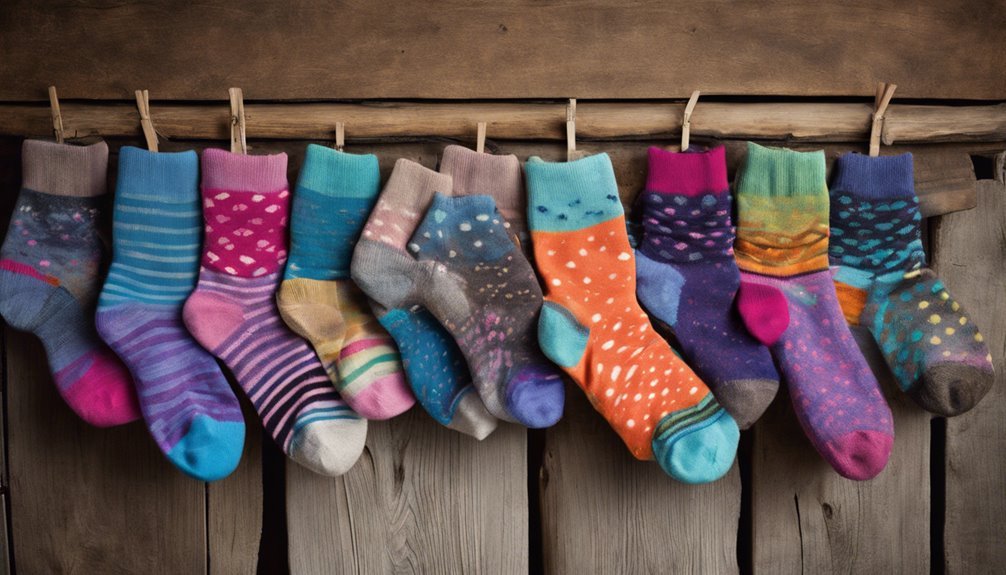
When thinking about upcycling old socks, focus on those made from natural materials like cotton and wool, which are both versatile and eco-friendly. Don't overlook your worn-out athletic socks either; their durable fabric can be repurposed into practical items like cleaning cloths or even plant holders. By choosing the right types of socks, you're not only reducing waste but also creating something new and useful.
Cotton and Wool Socks
Cotton and wool socks are excellent candidates for upcycling due to their natural fibers and versatility. By choosing these sock materials, you're embracing sustainable fashion and reducing waste. Cotton socks, known for their softness and absorbency, make ideal eco-friendly cleaning rags. They're perfect for dusting or wiping surfaces without leaving scratches. Wool socks, on the other hand, offer durability and a natural antibacterial quality, making them great for tougher cleaning tasks.
When you upcycle, you're not just repurposing—you're liberating yourself from the cycle of consumerism. You give your old socks a second life, turning them into practical tools. Embrace this freedom and contribute to a greener planet by transforming your unused socks into valuable household assets. Remember, every small step counts toward sustainability.
Worn-Out Athletic Socks
Athletic socks, often made from synthetic blends, are another excellent candidate for upcycling. These socks are designed with sweat absorption and odor control in mind, making them perfect for transforming into cleaning rags. You don't have to toss them when they start showing signs of wear. Instead, let them breathe new life into your cleaning routine. Cut them into manageable pieces, and you've got yourself durable, eco-friendly rags that soak up spills and wipe surfaces with ease.
Simple Steps to Transform Socks Into Cleaning Rags
Turning old socks into cleaning rags is a simple way to reduce waste and save money. Start by gathering scissors and any socks you no longer wear, then cut them into squares or strips to suit your cleaning needs. Finally, store them in a designated spot, so they're always ready for your next eco-friendly cleaning session.
Gather Necessary Materials
Transforming your old socks into useful cleaning rags is both an eco-friendly and practical endeavor. Start by gathering socks that have seen better days—perhaps those with worn heels or mismatched partners. Your sock selection is key to maximizing cleaning effectiveness. Choose socks made of absorbent materials like cotton, which are excellent for soaking up spills and wiping surfaces.
You'll also need some basic household supplies: a pair of sharp scissors for cutting, and a sewing kit if you plan to reinforce the edges. A small bucket or container will keep your new rags organized and easily accessible. By reusing what's already available, you're making a sustainable choice that offers freedom from wastefulness and unnecessary purchases, all while maintaining a cleaner home environment.
Cut and Shape
To begin transforming your old socks into handy cleaning rags, lay them flat on a clean surface. Using sharp scissors, choose cutting techniques that maximize the fabric's utility. For instance, make a simple cut along the sock's length to create a larger, more versatile piece. This approach gives you a rectangular shape that's perfect for scrubbing surfaces or dusting. Shaping methods can be adapted to your needs; if you prefer a smaller cloth, cut the sock into squares or circles. These shapes are great for detailed cleaning tasks. Remember, you're not just cutting fabric; you're crafting a tool that embodies freedom from waste. By using these resourceful strategies, you're giving new life to old materials and contributing to a cleaner planet.
Store and Use
Storing and using your newly crafted cleaning rags is a straightforward process that guarantees they're always within reach and ready for action. Start with a dedicated storage solution that keeps your sock organization tidy and accessible. Use a basket or a drawer divider in your cleaning supplies area to house your rags. This assures you're not rummaging around when it's time to tackle spills or dust.
When using the rags, simply grab one and get to work—no need for single-use waste. After use, toss them into a designated laundry bag, making it easy to wash and reuse. Embrace the freedom of eco-friendly cleaning with these simple, practical steps that respect both your space and the planet.
Creative Uses for Sock Cleaning Rags
When your socks have worn out beyond repair, don't toss them just yet—consider turning them into versatile cleaning rags. You'll find these soft, absorbent pieces perfect for tackling everyday household chores, from dusting surfaces to wiping up spills. Let your imagination run wild with sock art, transforming them into eco-friendly gifts for friends who appreciate sustainability. Stitch together colorful sock pieces into unique patchwork designs or create charming sock puppets for kids' entertainment.
Use sock rags as handy wipes for polishing furniture or cleaning your car's interior. They're gentle on surfaces and can be washed and reused multiple times, minimizing waste. By repurposing old socks, you're not only reducing your carbon footprint but also embracing a lifestyle that values creativity and freedom.
Maintenance Tips for Long-Lasting Sock Rags
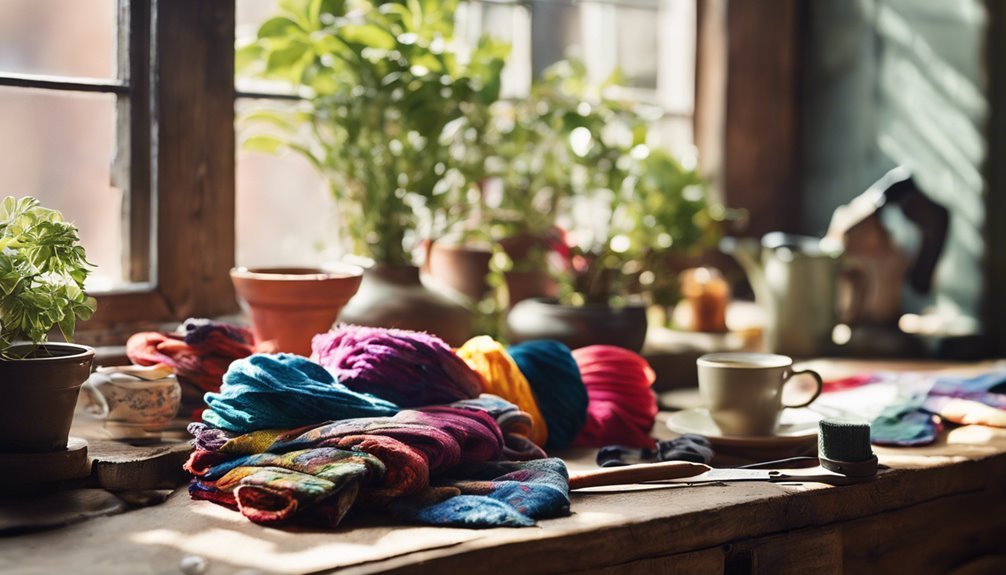
Proper care extends the life of your sock rags, making them even more resourceful over time. Embrace these cleaning tips to keep your sock rags in top shape and ready for action. First, rinse them thoroughly after each use to prevent buildup. It's amazing how fresh they'll stay with a simple rinse. Next, hang them up to dry properly. This reduces mildew and keeps them smelling fresh. Finally, don't forget to wash them occasionally with eco-friendly detergent. This will rejuvenate their cleaning power.
- Rinse thoroughly: Prevents buildup and keeps them fresh.
- Hang to dry: Reduces mildew, maintaining freshness.
- Eco-friendly wash: Rejuvenates cleaning power.
With these sock care tips, you'll enjoy durable, reliable rags, freeing you from constantly replacing them.
Frequently Asked Questions
Can Colorful Socks Cause Color Transfer When Used as Cleaning Rags?
You're wondering if colorful socks will cause color bleed when cleaning. Yes, they can. To prevent this, wash them separately first. It's a practical, eco-conscious fabric care step for resourceful, freedom-loving individuals like you.
How Can I Remove Smells From Old Socks Before Upcycling Them?
Did you know that 90% of sock odors can be neutralized naturally? For sock freshness tips, try soaking them in vinegar or baking soda. These odor removal techniques are eco-conscious and offer resourceful solutions, freeing you from chemical deodorizers.
Are There Any Health Risks Associated With Using Socks for Cleaning?
When using socks for cleaning, health concerns arise if sock hygiene isn't prioritized. Wash them thoroughly to remove bacteria and germs. Embrace eco-conscious living by ensuring they're clean—it's a practical, resourceful solution for sustainable households.
Can Upcycled Sock Rags Be Used on Delicate Surfaces Like Glass?
You can use sock material on delicate surfaces like glass, but make certain it's soft and clean. Their cleaning effectiveness varies, so test gently first. Embrace this resourceful solution to minimize waste while maintaining your freedom to experiment.
What Are Alternative Uses for Mismatched or Single Socks?
You've got mismatched socks? Turn them into sock puppets for playful storytelling or immerse yourself in DIY crafts. It's an eco-friendly way to embrace creativity, offering resourceful solutions while enjoying the freedom to transform old into new.

